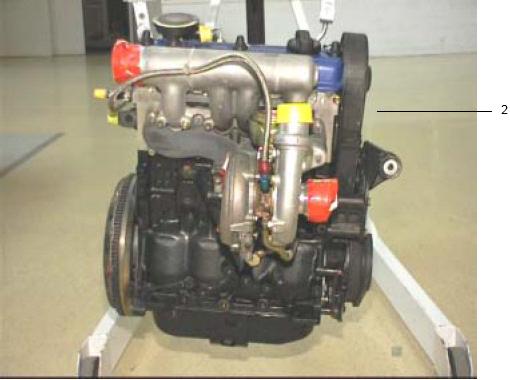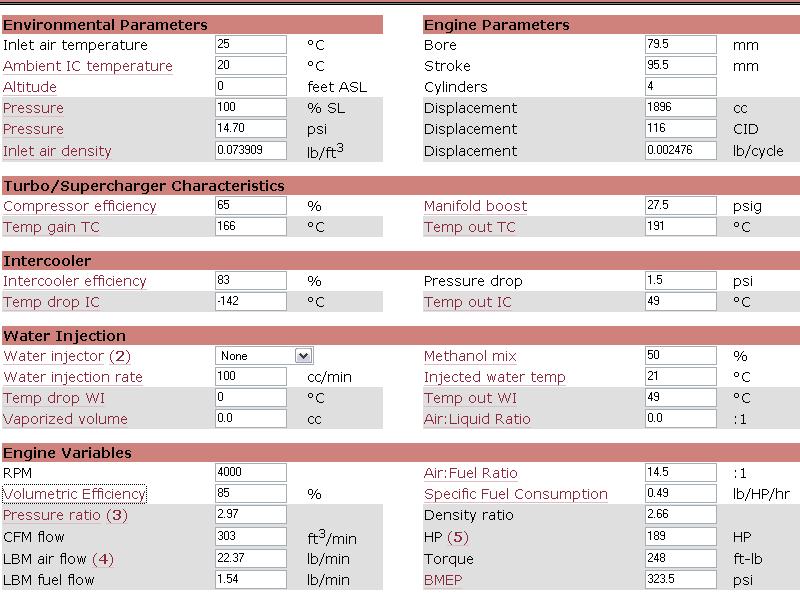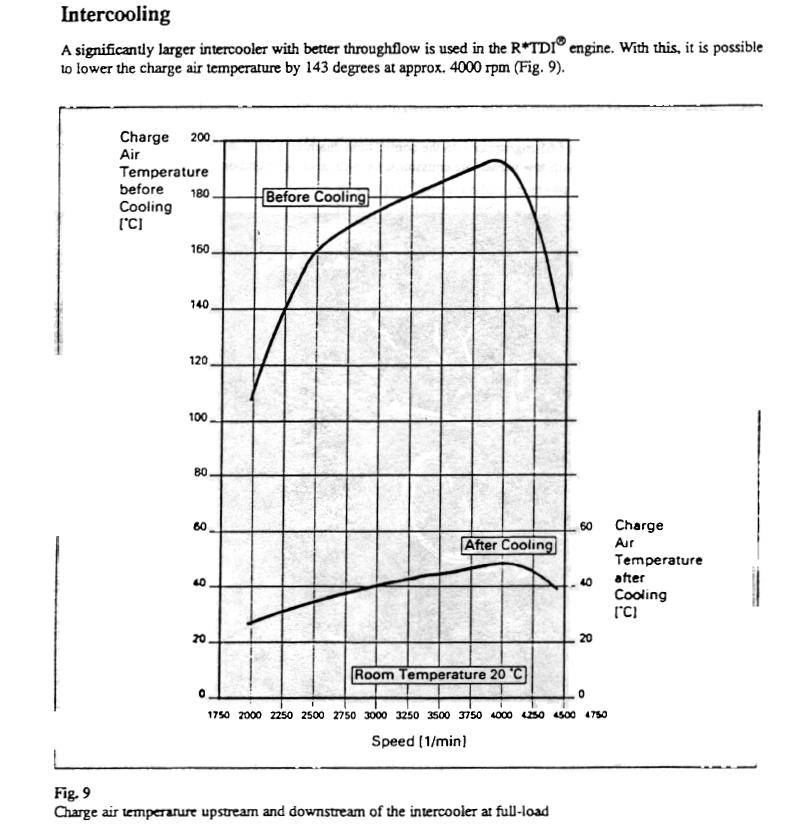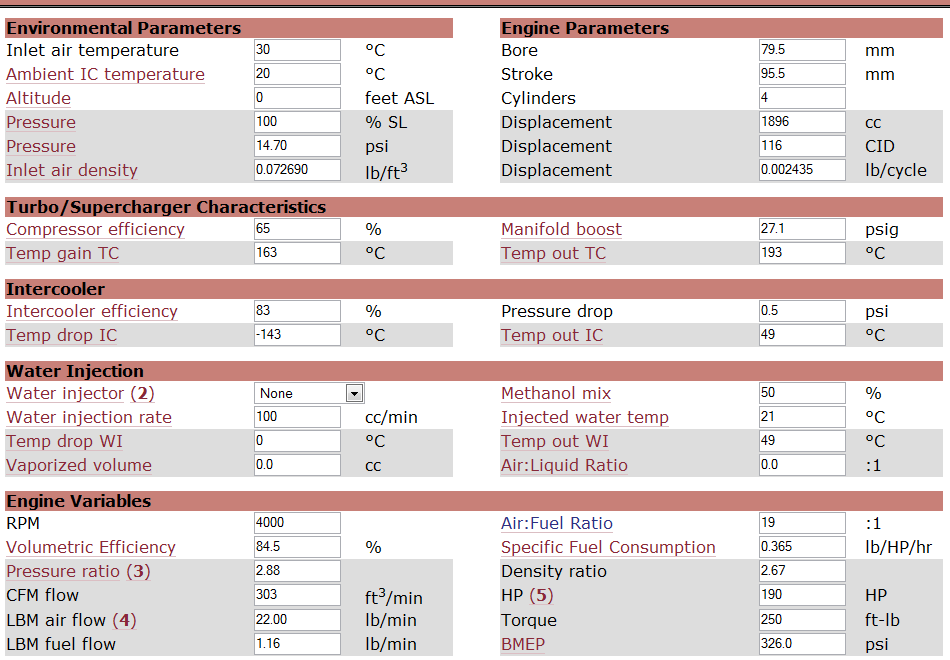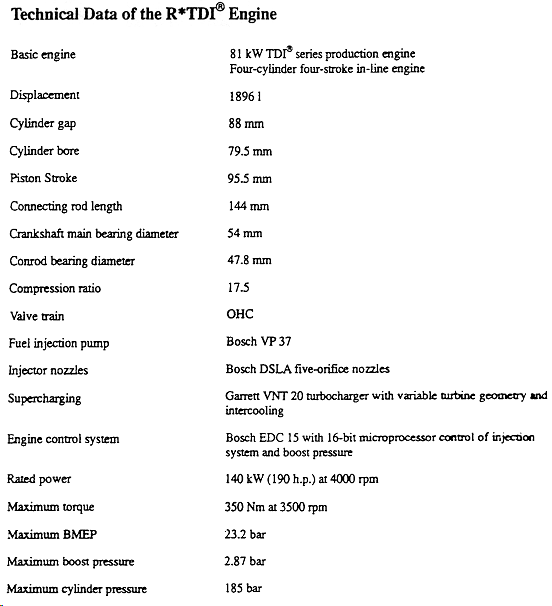Referring to my original analysis of the R-TDI engine above, I have done some further calibration and refining of data for the Turbo Calculator applet. I have found excellent agreement between the published data and that calculated at the rated power point.
Key to making the calculation fit the published data was determining the correct BSFC at the operating point of interest. This was given in the paper:

A BSFC value of 222 g/kWh equates to about 0.365 lb/HP/hr (222*2.204*0.746/1000).
I also assumed a full-load air-fuel ratio at rated power of 19:1, which equates to a Lambda value of 1.3. This value is determined from experience and is a reasonable assumption.
The calculations and assumptions for the BSFC and AFR are valid in this Turbo Calculation applet, because the heating value of Diesel fuel per unit of mass is almost identical to that of gasoline (between about 42-43 MJ/kg), as is the stoichiometric AFR of the two fuels (between about 14.5-14.7:1).
Although the friction mean effective pressure (FMEP) of a Diesel engine will be higher to that of a gasoline engine of similar layout, technology and displacement, for the purposes of a rough estimation which this is (this is by no means an industrial-grade analysis), it would suffice to assume them roughly equal. This assumption is valid in spite of the fact that although FMEP would be higher at a given RPM, maximum power of a Diesel engine occurs at a lower RPM than a gasoline engine (4000 RPM vs. 5500 RPM or more). FMEP increases with RPM, but since we're interested in ONE operating point, that is at maximum power, the blunt assumption is sufficient.
Screenshot of the calculation results:
For your enjoyment to play around with the numbers,
this link takes you to the Turbo Calculator page with all of the input data from the screenshot above already inserted.
(edited Jan. 14,2008: I've updated some of the numbers in the above Hyperlink for even better realism, so some parameters will be slightly changed from the screenshot. For example, an IC pressure loss of only 0.5 PSI is not very realistic)
Below is a summary of the technical data of the 1997 R-TDI:
Enjoy!





